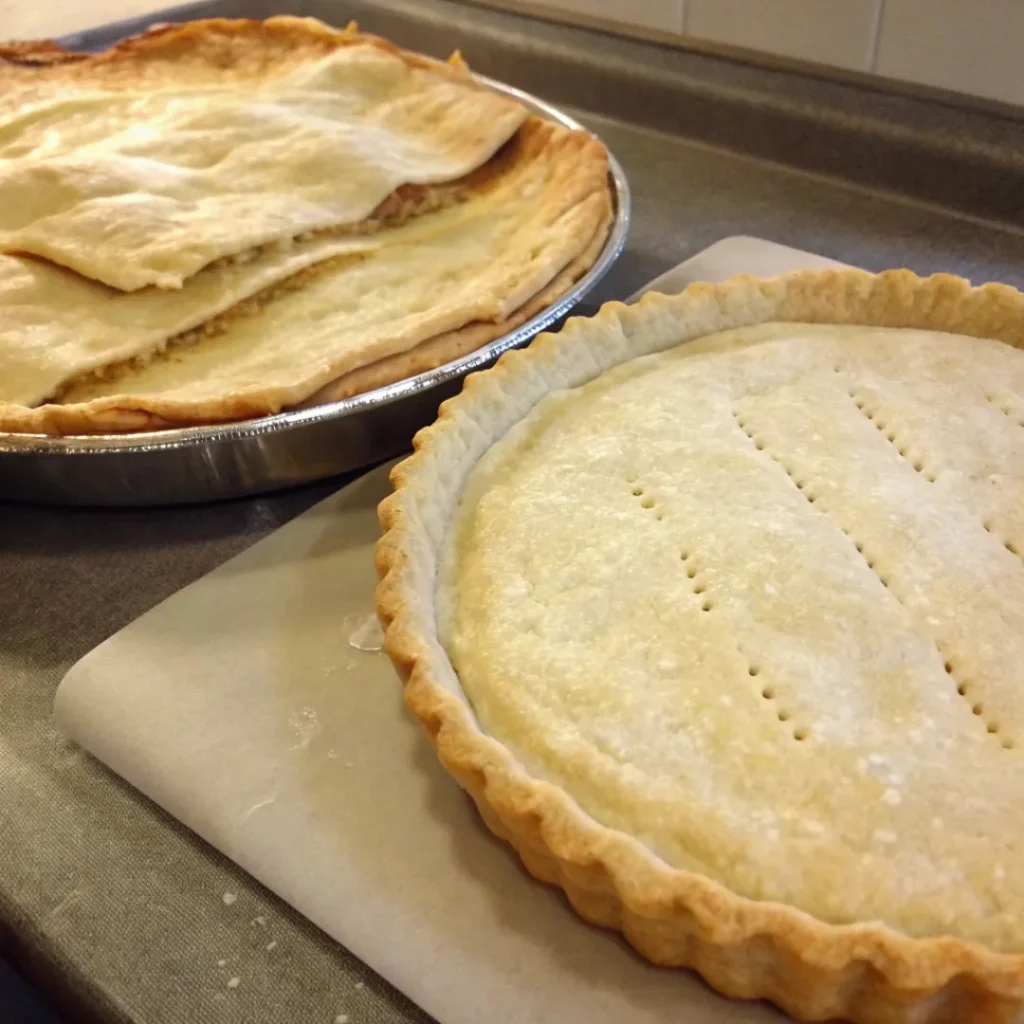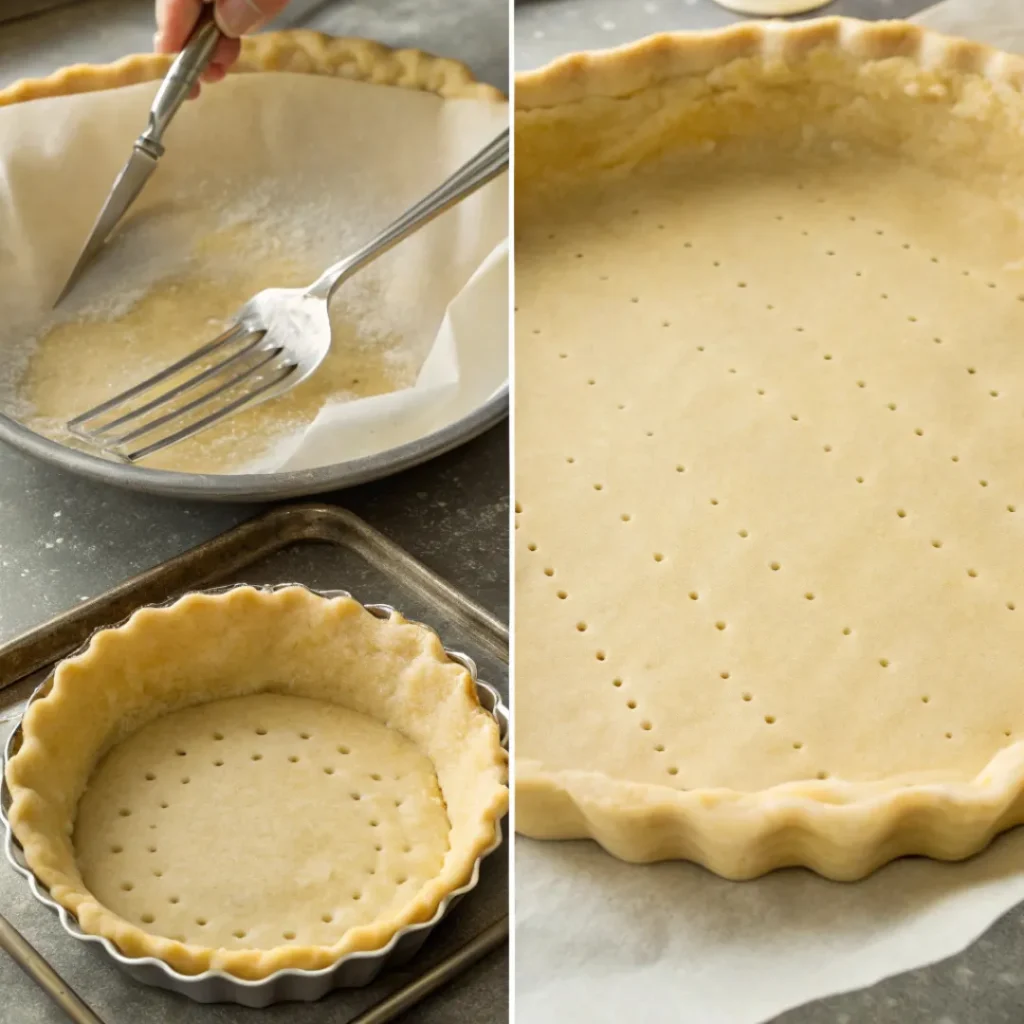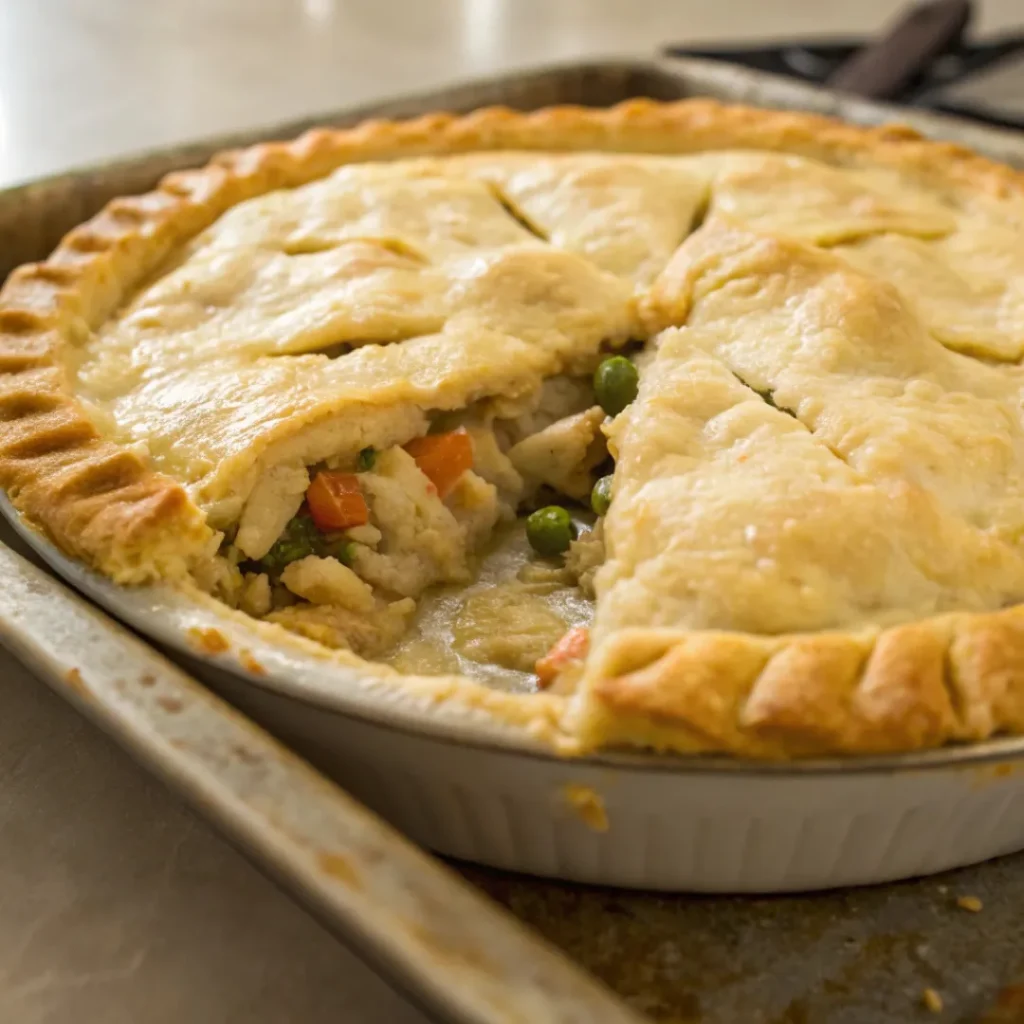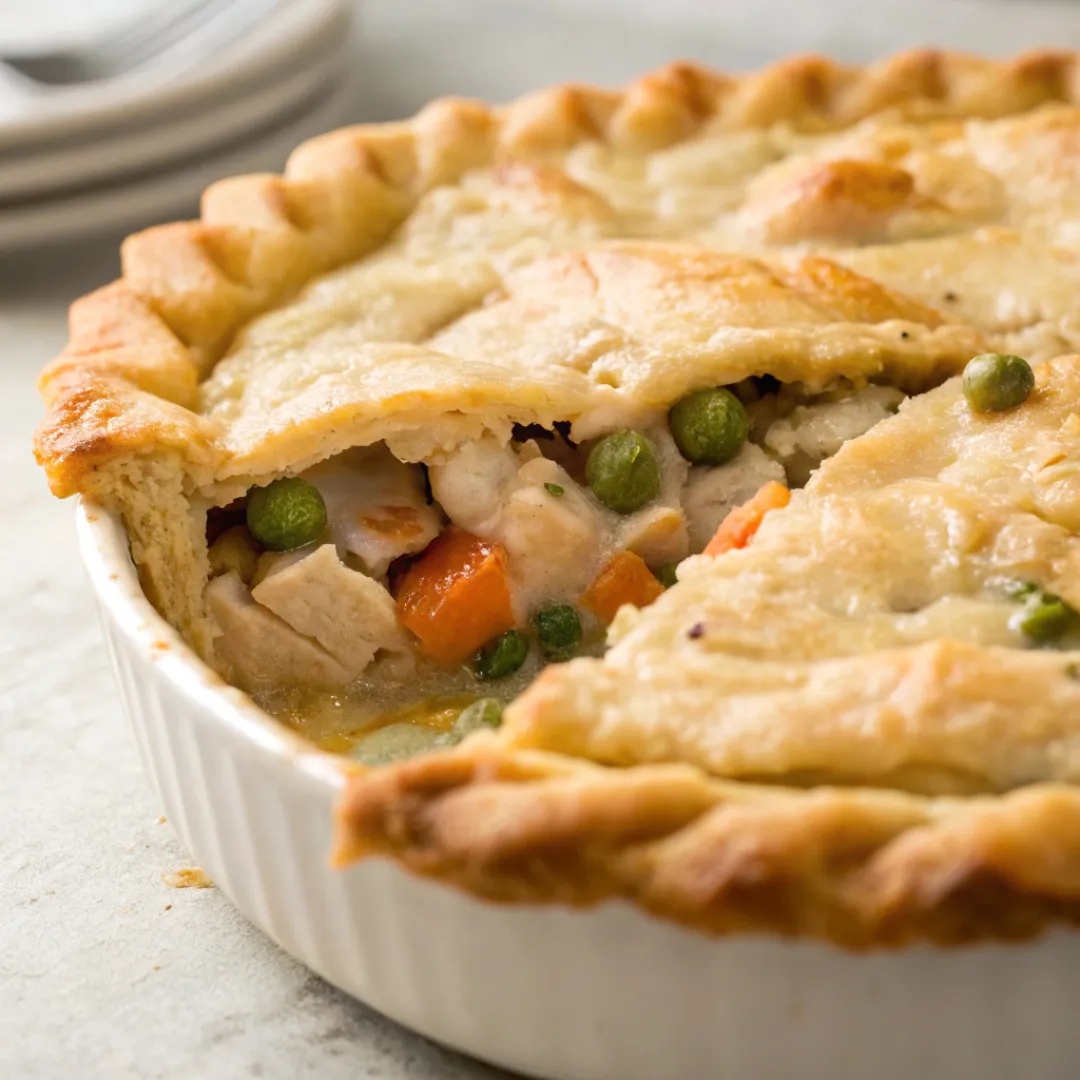Chicken pot pie is a comforting classic, but many cooks find themselves asking, how do you keep the bottom crust of a chicken pot pie from getting soggy? A soggy crust can ruin the dish by turning the flaky base into a wet, doughy mess. Luckily, with the right techniques, you can ensure that your chicken pot pie has a perfectly crisp bottom crust every time.
A soggy crust happens when the bottom of the pie absorbs too much moisture from the filling, leaving it soft and doughy rather than crispy and flaky. Fortunately, there are several tried-and-true methods for preventing this culinary dilemma. In this article, we will explore multiple techniques to keep the bottom crust of your chicken pot pie from getting soggy, ensuring you enjoy a perfectly baked pie every time.
Understanding Why the Bottom Crust Gets Soggy
Before we delve into the solutions, it’s important to understand why the bottom crust of a chicken pot pie tends to get soggy. This typically happens when moisture from the filling seeps into the crust during the baking process. A few factors can contribute to this problem:
High Moisture Content in the Filling
If the filling contains too much liquid, it will saturate the bottom crust as it bakes.
Slow Baking Process
If the pie is baked at a low temperature or not baked long enough, the filling can become too liquid, soaking into the crust.
No Barrier Between Filling and Crust
Without a protective layer, the crust is more vulnerable to becoming soggy due to direct contact with the moist filling.
Understanding these common pitfalls helps in choosing the best techniques to ensure a crispy bottom crust.
Choosing the Right Pie Crust
The type of pie crust you use can play a significant role in whether or not your chicken pot pie has a soggy bottom. Opting for the right crust ensures a better barrier between the filling and the base of the pie.

Store-Bought vs. Homemade Pie Crust
Both store-bought and homemade crusts can work for chicken pot pie, but homemade pie crusts often yield better results. Homemade dough typically contains higher fat content, which helps create a flakier and more resilient crust. When making homemade dough, use cold butter or shortening to ensure the crust maintains its structure during baking.
Puff Pastry
If you want a more foolproof crust that resists becoming soggy, consider using puff pastry for the bottom layer. Puff pastry has numerous layers of dough and fat, which help it puff up and resist moisture absorption. Puff pastry can be slightly more delicate to work with, but it creates a wonderfully crispy and flaky base for chicken pot pie.
Pre-Rolled Pie Dough
Store-bought pre-rolled pie dough is also a solid option. Just make sure you select one that is sturdy enough to handle the weight and moisture of the filling. Look for dough that has butter as an ingredient for a richer, flakier crust.
Pre-Baking the Crust (Blind Baking)
One of the most effective ways to prevent a soggy bottom crust is to pre-bake, or blind bake, the crust before adding the filling. This method involves baking the crust partially to create a firm, dry layer before the wet filling is added.

How to Blind Bake the Crust
- Prepare the Dough: Roll out your pie dough and fit it into your pie dish, trimming any excess dough around the edges.
- Prick the Dough: Use a fork to poke small holes in the bottom of the crust. This allows steam to escape and prevents bubbling.
- Add Weight: Place a piece of parchment paper or aluminum foil over the crust, then fill the pie with baking weights, uncooked rice, or dried beans. This helps the crust keep its shape during pre-baking.
- Pre-Bake: Bake the crust in a preheated oven at 375°F (190°C) for 10-15 minutes, or until the edges begin to turn golden.
- Remove the Weights: Take the pie crust out of the oven and carefully remove the parchment paper and weights.
- Bake Again (Optional): If you want the crust even crisper, you can return it to the oven for another 5 minutes to fully dry out the bottom before adding the filling.
Benefits of Blind Baking
Blind baking is especially effective because it reduces the amount of time the filling comes in contact with the raw dough. By giving the crust a head start, you ensure that it holds up better during baking, leading to a crisp, golden bottom.
Learn more about blind baking techniques to ensure a perfectly crisp pie crust every time.
Using the Right Type of Filling
The filling of a chicken pot pie is a key component, but it can also be the reason why the crust becomes soggy. Choosing the right type of filling helps maintain the integrity of the crust.
Thick vs. Thin Filling
A thick, creamy filling is less likely to seep into the bottom crust than a thin, watery one. When making the filling, ensure that it has enough consistency to avoid excessive moisture. If the filling is too runny, it can cause the crust to become soggy during baking.
Thickening Agents
To prevent a thin filling, use thickening agents like all-purpose flour or cornstarch. These ingredients help absorb excess moisture and create a creamier texture. When making the sauce for the chicken pot pie, whisk flour into the butter and broth to create a thick roux that will hold up better during baking.
Avoid Too Much Liquid
Be careful not to add too much broth, cream, or other liquid components to the filling. While the sauce should be creamy and rich, too much liquid increases the chances of it soaking into the crust.
Preventing Excess Moisture in the Filling
To further protect the bottom crust from getting soggy, it’s crucial to manage the moisture level in your filling. Here are some tips to help:
Precooking Vegetables
Vegetables like carrots, potatoes, and peas contain a lot of water. If they release too much moisture during baking, this liquid can seep into the crust. To combat this, precook your vegetables by steaming or sautéing them before adding them to the pie. This helps to reduce the water content and ensures a drier filling.
Cook the Chicken Properly
If you’re using cooked chicken, ensure it is well-drained before adding it to the filling. Leftover roasted or rotisserie chicken works well for chicken pot pie because it is already fully cooked and contains less moisture than raw chicken.
Layering Techniques: Protecting the Crust
Layering certain ingredients between the crust and the filling can act as a barrier, preventing moisture from seeping through and making the crust soggy.
Adding a Layer of Breadcrumbs
Sprinkling a thin layer of breadcrumbs or crushed crackers over the bottom crust before adding the filling can help absorb excess moisture. The breadcrumbs act as a buffer between the filling and the dough, keeping the crust crisp.
Using Egg Wash
Brushing the bottom crust with an egg wash before pre-baking can create a moisture-proof barrier. The egg wash helps seal the dough and creates a thin, protective layer that prevents the filling from seeping into the crust.
Properly Venting the Pie
Venting your chicken pot pie ensures that steam escapes during the baking process, which prevents the filling from becoming overly moist. When steam builds up inside the pie, it condenses into liquid, which can cause the bottom crust to become soggy.
How to Vent a Pie
Cut small slits or use a decorative pattern in the top crust to allow steam to escape. If you’re using a lattice crust or other open-top design, this will naturally allow for better ventilation.
Oven Temperature and Baking Time
The baking process plays a significant role in whether or not the bottom crust turns out soggy. The temperature and duration of the baking session affect how the crust reacts to the filling.
Use High Heat Initially
Start baking your chicken pot pie at a higher temperature (around 425°F/220°C) for the first 15 minutes. This initial blast of heat helps set the bottom crust quickly, reducing the likelihood of it absorbing moisture from the filling.
Lower the Temperature
After 15 minutes, lower the oven temperature to 375°F (190°C) and continue baking for the remaining time. This allows the filling to cook through without over-browning the crust.
Using a Baking Sheet or Stone
Another way to prevent a soggy bottom crust is to bake the pie on a preheated baking sheet or baking stone. The direct heat from the sheet or stone helps cook the bottom crust faster and more evenly, preventing it from becoming soggy.
How to Use a Baking Sheet or Stone
- Preheat your baking sheet or stone in the oven while it heats up.
- Once preheated, place your pie dish directly on the hot baking sheet or stone.
- The heat from below will help set the bottom crust and ensure it bakes evenly.

Frequently Asked Questions
Why is my chicken pot pie crust soggy?
A soggy chicken pot pie crust is typically caused by excess moisture in the filling or not baking the pie at the correct temperature. Blind baking the crust and using thickening agents in the filling can help.
Do I need to pre-bake the bottom crust for chicken pot pie?
Yes, pre-baking (or blind baking) the bottom crust can help prevent sogginess by creating a barrier that keeps the filling from soaking into the crust.
Can I use puff pastry for the bottom crust?
Yes, puff pastry can be used as the bottom crust for chicken pot pie. Its layers of fat and dough make it a good option for resisting moisture.
How do I keep the bottom crust from getting soggy with a juicy filling?
To prevent sogginess with a juicy filling, use thickening agents such as flour or cornstarch in the filling and consider sprinkling breadcrumbs or brushing the bottom crust with egg wash to create a barrier.
Conclusion
Achieving a crispy, flaky bottom crust in a chicken pot pie can be challenging, but with the right techniques, it’s entirely possible. From blind baking the crust to managing the moisture level in the filling, there are numerous methods to ensure that your bottom crust stays crisp and golden. Whether you’re using homemade pie dough or store-bought crust, these tips will help you master the art of baking the perfect chicken pot pie—complete with a delicious, non-soggy bottom crust.

